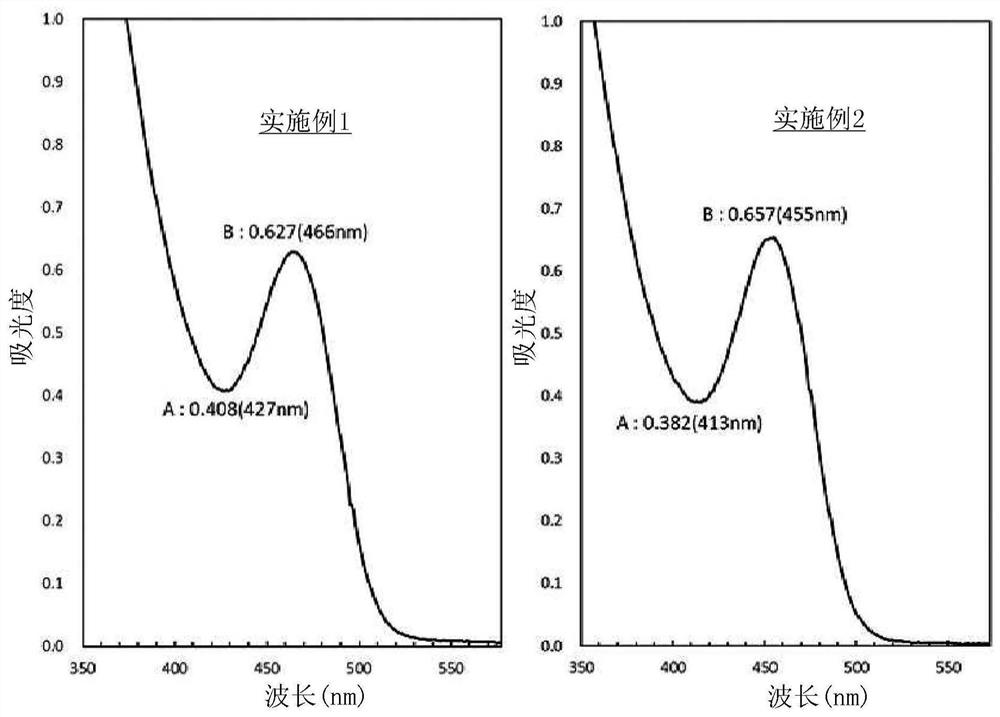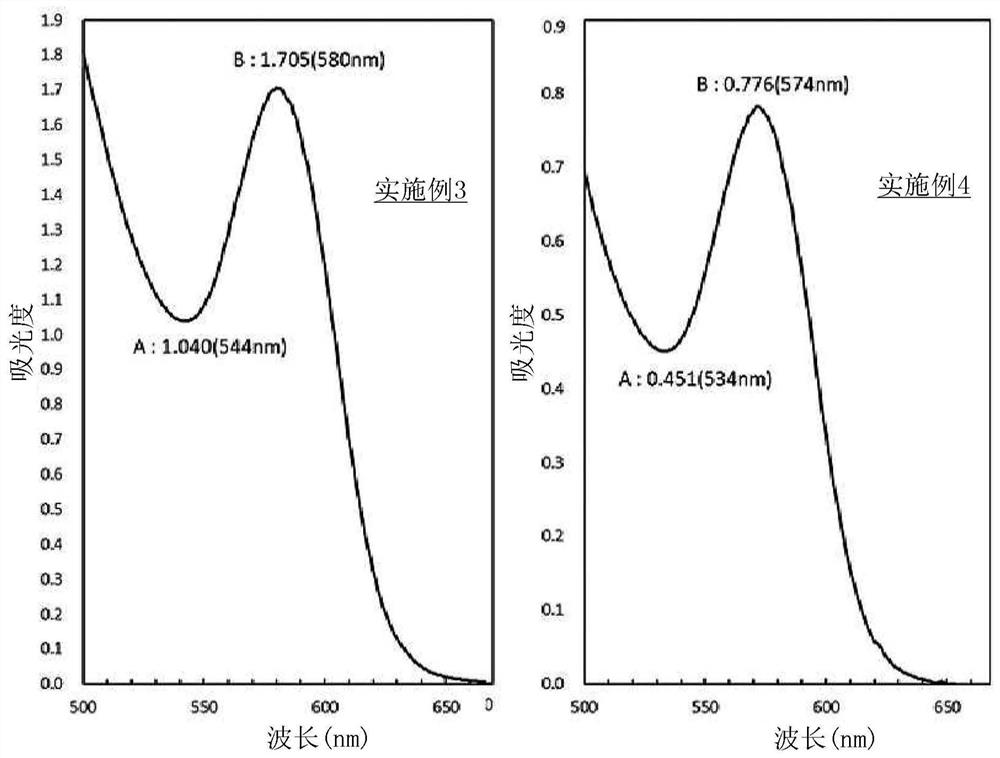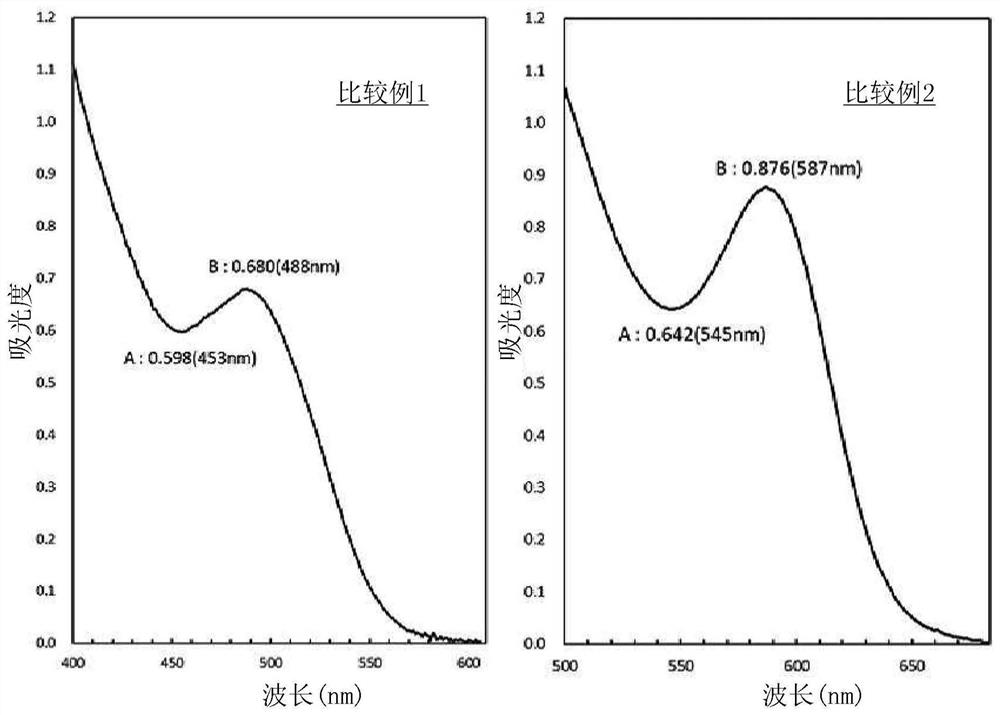Method for producing quantum dot nanoparticles, Quantum dot nanoparticles prepared by the method, and Light emitting element
A nanoparticle and quantum dot technology, which is applied in the field of preparing quantum dot nanoparticles, can solve the problems of quantum dot nanoparticles being easily oxidized, luminous efficiency, and durability reduction, and achieve excellent quantum yield, narrow full width at half maximum, and color reproduction Excellent range of effects
- Summary
- Abstract
- Description
- Claims
- Application Information
AI Technical Summary
Problems solved by technology
Method used
Image
Examples
preparation example Construction
[0045] According to the production method of the present invention, quantum dot nanoparticles with a narrow full width at half maximum can be produced by narrowing the particle size distribution. If the cationic and anionic precursors meet water molecules during the preparation of quantum dot nanoparticles, the following reactions occur.
[0046] [Reaction Scheme 1]
[0047] In-(Alkyl Acid) 3 +H 2 O→HO-In-(Alkyl acid) 2 + Alkyl acid
[0048] P(SiMe 3 ) 3 +H 2 O→HO-P(SiMe 3 ) 2 +HO-SiMe 3
[0049]As shown in Reaction Scheme 1 above, the cationic and anionic precursors containing hydroxyl groups (-OH) have lower particle growth rates due to the reduction in bonding groups, and thus, the particle size distribution is also uniformly formed. However, the method of inputting only water has the disadvantage that it is difficult to introduce hydroxyl groups (—OH) into quantum dot nanoparticles.
[0050] Therefore, the preparation method of the present invention provides a ...
preparation example 1
[0133] Preparation Example 1: Preparation of Indium Precursor
[0134] 51.0 g (0.175 mol) of indium acetate, 134.5 g (0.525 mol) of palmitic acid and 152.2 g of 1-octadecene were charged into a 4-neck 1 L equipped with a heating mantle, reduced pressure vacuum, thermometer and mechanical stirrer glass reactor and the temperature was raised to 100°C while feeding nitrogen. After raising the temperature, it was confirmed that the solid compound was completely dissolved in the reactor, and the acetic acid produced during the reaction was completely removed while the temperature was raised to 170° C. and kept under reduced vacuum of 10 mTorr for 3 hours. Subsequently, 305.4 g of the indium palmitate precursor was cooled to room temperature and stored in a nitrogen-filled container.
preparation example 2
[0135] Preparation Example 2: Preparation of Zinc (Zn) Precursor
[0136] 64.2 g (0.35 mol) zinc acetate, 197.7 g (0.70 mol) oleic acid, and 373.1 g 1-octadecene were charged into a 4-neck 1 L glass reactor equipped with a heating mantle, reduced pressure vacuum, thermometer and mechanical stirrer and the temperature was raised to 100°C while feeding nitrogen. After raising the temperature, it was confirmed that the solid compound was completely dissolved in the reactor, and the acetic acid produced during the reaction was completely removed while the temperature was raised to 170° C. and kept under reduced vacuum of 10 mTorr for 3 hours. Subsequently, 592.1 g of the zinc oleate precursor was cooled to room temperature and stored in a nitrogen-filled container.
PUM
| Property | Measurement | Unit |
|---|---|---|
| width | aaaaa | aaaaa |
| width | aaaaa | aaaaa |
| particle diameter | aaaaa | aaaaa |
Abstract
Description
Claims
Application Information
 Login to View More
Login to View More - Generate Ideas
- Intellectual Property
- Life Sciences
- Materials
- Tech Scout
- Unparalleled Data Quality
- Higher Quality Content
- 60% Fewer Hallucinations
Browse by: Latest US Patents, China's latest patents, Technical Efficacy Thesaurus, Application Domain, Technology Topic, Popular Technical Reports.
© 2025 PatSnap. All rights reserved.Legal|Privacy policy|Modern Slavery Act Transparency Statement|Sitemap|About US| Contact US: help@patsnap.com



